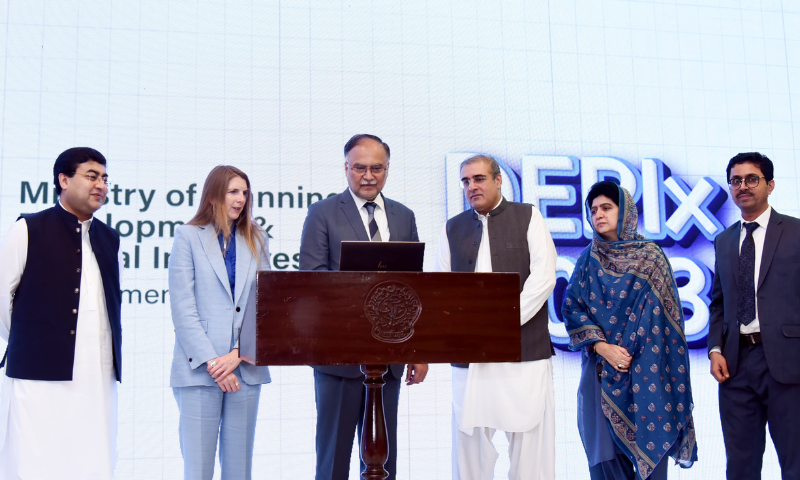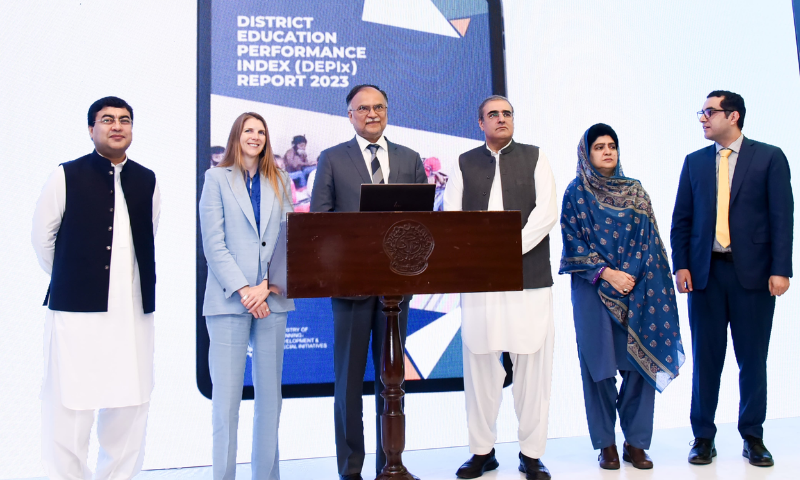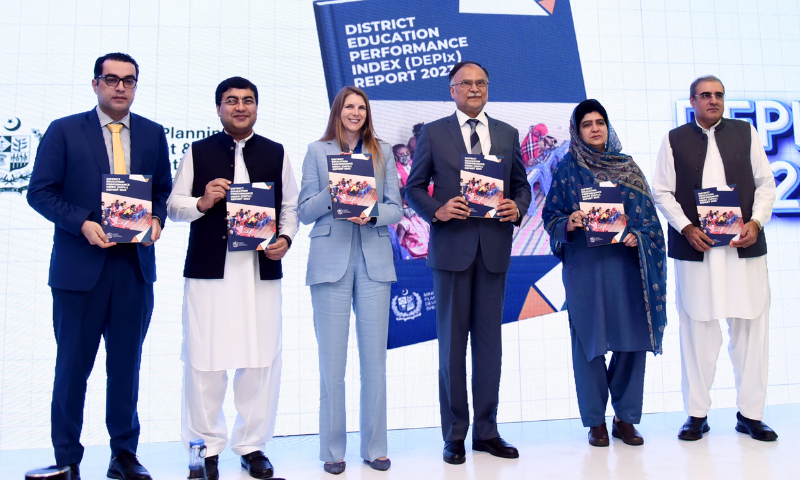Islamabad, 23 August 2024 (TDI): Islamabad ranked the best-performing district nationwide as Pakistan’s first education rankings revealed stark regional disparities in provinces and districts.
A groundbreaking report, the District Education Performance Index (DEPIx) 2020-23, released by the Planning Commission, is first-of-its-kind to measure district-level education performance, focusing on key outcomes such as access, learning, governance, equity, and inputs such as public financing and infrastructure.
Covering 134 districts, including Islamabad Capital Territory (ICT) and all districts in Balochistan, Khyber Pakhtunkhwa (KP), Punjab, and Sindh, DEPIx classified districts into four categories: Very High, High, Medium, and Low. The report primarily covers the period from 2020-23.

Pakistan’s national average score on the index is a modest fifty-three out of hundred, placing it in the “Low” performance category.
Within the country, there are significant variations across provinces, with Punjab emerging as the top performer at 61/100. KP follows with 55/100, while Sindh and Balochistan trail with scores of 51.5/100 and 46/100, respectively.
Notably, none of the provinces earned place in the “High” or “Very High” performance categories, with both Punjab and Khyber Pakhtunkhwa falling into the “Medium” category.
The Index also indicates major disparities across the different domains of education system. Nationally, the highest score was achieved in the Infrastructure & Access domain (59/100), indicating progress in expanding educational opportunities.
However, the report also indicated that actual access figures might be higher, especially in urban centers with a strong presence of private schools, which were not fully accounted for due to data limitations.

The Inclusion (Equity & Technology) domain also scored relatively well. Conversely, public financing registered the lowest score among all domains, underlining the urgent need for better-targeted and increased public spending in education.
The Learning domain also performed poorly, reflecting persistently low student outcomes. Governance & Management domain also remains in the “Low” category, affected mainly by teacher shortages and high bureaucratic turnover.
The index underlined major differences not only between provinces but also within them, revealing the strengths and weaknesses in different aspects of their education systems. For example: Punjab outperforms other provinces in Infrastructure & Access (73) and Inclusion (75) but ranks lower in Public Financing and Governance & Management during the period of 2021-23.
Khyber Pakhtunkhwa Leads in Public Financing, Governance
Khyber Pakhtunkhwa leads in Public Financing and Governance & Management but lags behind in Learning outcomes. Sindh shows relative strength in Public Financing, where it ranks highest, but struggles in Infrastructure & Access and Governance & Management.
Balochistan faces challenges across all domains, ranking lowest overall, with a slightly better performance in Learning.
Alarmingly, none of the 134 districts examined falls within the “Very High” performance category, and only Islamabad ranked in the “High” category, making it the best-performing district countrwide
About two-fifths of 58 districts are categorized as “Medium,” with Punjab contributing thirty-two of these districts, followed by KP with seventeen, and Sindh with eight.

However, more than half of districts (76) are classified as “Low” performers. These low-performing districts are predominantly found in Balochistan and Sindh, with Balochistan having thirty-three and Sindh twenty-two, further underlining the considerable inter-provincial disparities in education.
The report also uncovers stark disparities within provinces. KP exhibits the most significant intra-provincial differences, with districts like Haripur, Chitral, and Abbottabad among the top performers, while Kolai Palas, Upper Kohistan, and Lower Kohistan are among the lowest.
Punjab and Balochistan show the least internal variation, with Punjab’s districts generally falling into the “Medium” category and all of Balochistan’s districts in the “Low” category.
Sindh displays moderate variation, with most districts are placed in the “Low” category, except for the urban districts of Hyderabad and Karachi.
Commenting on the report, the Federal Planning Minister, Ahsan Iqbal, acknowledged the progress the country has made in human capital development but said that the pace has been slower compared to other emerging economies and regional countries.
“These findings serve as a sober reminder that much more should to be done to improve education performance across the country. We are in Knowledge Revolution era in which intellectual capital of the state determines its destiny, he said.”
Farkhund Yousafzai is an Associate Editor at The Diplomatic Insight.



